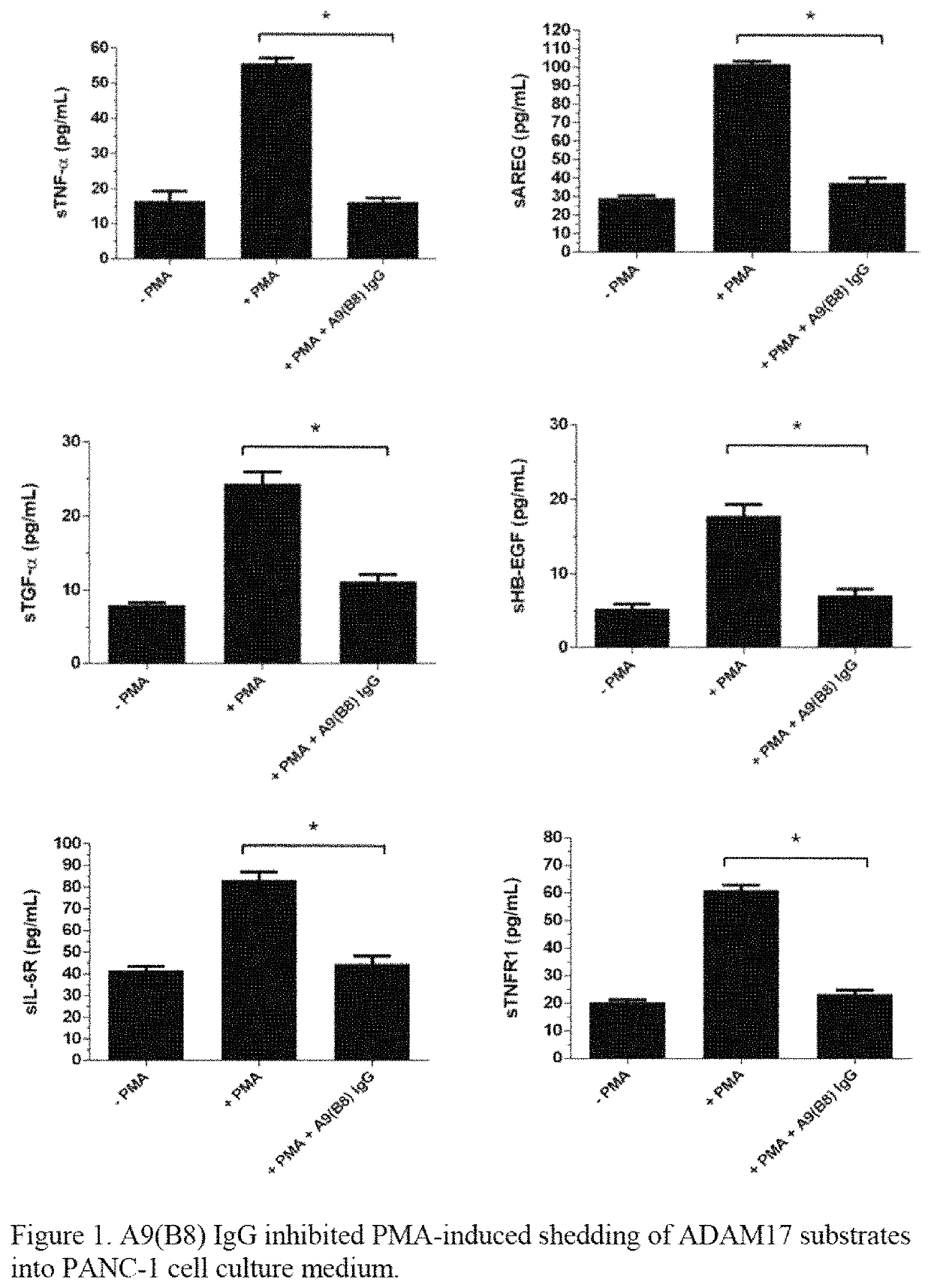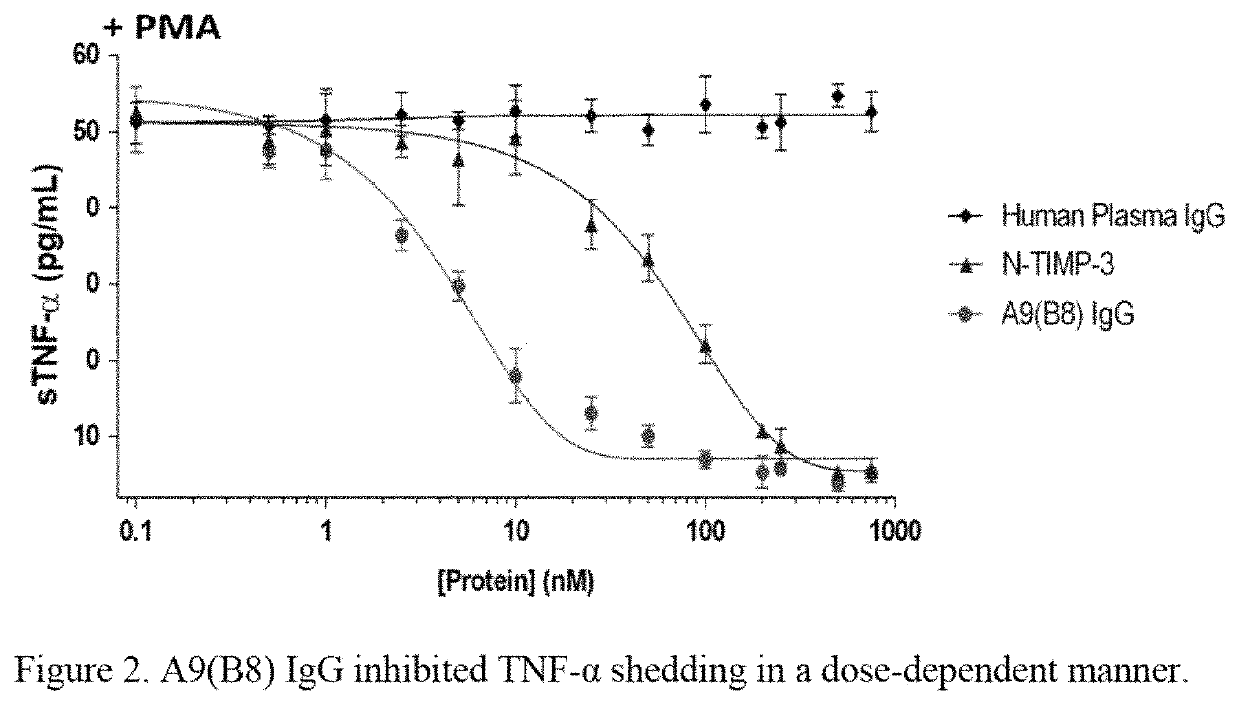Method of treatment for pancreatic cancer by administering a human-mouse cross-reactive ADAM 17 antibody
a human-mouse cross-reactive and anti-adam 17 technology, applied in the field of pancreatic cancer treatment, can solve the problems of mutant kras not efficiently driving the tumorigenesis of the pancreas in vivo, the survival rate of these patients is less than 2 years, and the cancer is virtually fatal
- Summary
- Abstract
- Description
- Claims
- Application Information
AI Technical Summary
Problems solved by technology
Method used
Image
Examples
Embodiment Construction
nt invention provides a method for reducing or preventing pancreatic cancer in patients in need thereof which can be used independently of or in conjunction with treatments of hypertension by administration of an ADAM17 inhibitory antibody to a subject in need thereof. AngII infusion showed vascular ADAM17 induction, EGFR activation and ER stress, which were attenuated in mice treated with such antibodies.
[0037]Antibodies suitable for use in the present invention are human and mouse cross-reactive ADAM17 inhibitory antibodies and include A9B8. Antibody A9B8 is available from Prof Hang Fai Kwok's research group at the faculty of Health Sciences (FHS) University of Macau.
[0038]Such antibodies may be administered to subjects in need thereof by conventional methods for administration of antibodies such as subcutaneous or intravenous injection. Such antibodies are typically administered at dosages of from 1-50 mg / kg every three days, more commonly in the range 3-20 mg / kg every three days...
PUM
| Property | Measurement | Unit |
|---|---|---|
| pH | aaaaa | aaaaa |
| time | aaaaa | aaaaa |
| time | aaaaa | aaaaa |
Abstract
Description
Claims
Application Information
 Login to View More
Login to View More - R&D
- Intellectual Property
- Life Sciences
- Materials
- Tech Scout
- Unparalleled Data Quality
- Higher Quality Content
- 60% Fewer Hallucinations
Browse by: Latest US Patents, China's latest patents, Technical Efficacy Thesaurus, Application Domain, Technology Topic, Popular Technical Reports.
© 2025 PatSnap. All rights reserved.Legal|Privacy policy|Modern Slavery Act Transparency Statement|Sitemap|About US| Contact US: help@patsnap.com



